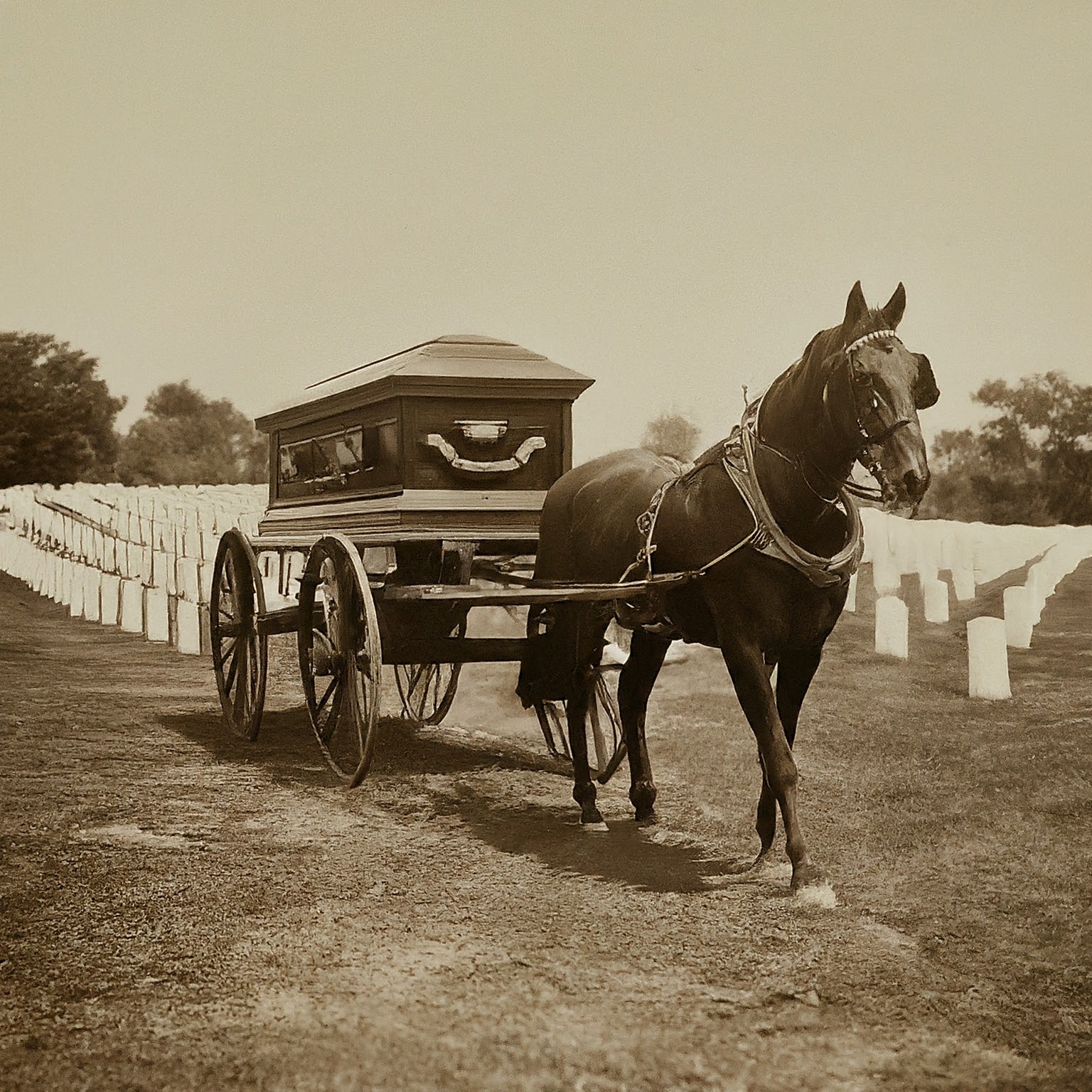
From Civil War to Present: The Evolution of National Cemeteries in America
I. Introduction
Have you ever wondered about those sprawling green spaces dotted with white headstones? These are the United States National Cemeteries, hallowed grounds dedicated to American veterans. They’re more than just burial grounds; they’re powerful symbols of our nation’s deep respect for those who served. But how did these cemeteries come to be, and why are they so important? Buckle up, history buffs and future veterans alike, because we’re about to embark on a journey to uncover the stories etched in stone and explore the enduring legacy of national cemeteries.

A. A Brief History of National Cemeteries
Imagine the aftermath of a Civil War battle. The air hangs heavy with smoke, the ground trampled and scarred. Soldiers from both sides lie scattered, their final resting places uncertain. It was in the midst of this grim reality that the idea of national cemeteries emerged. In 1862, the U.S. Congress stepped in, authorizing the creation of special cemeteries specifically to honor Union soldiers. This marked a turning point in how America honored its war dead. Before this, burials were often haphazard – soldiers might be buried in churchyards, family plots, or even hastily dug graves on the battlefield itself.
The sheer number of casualties during the Civil War necessitated a more organized and dignified approach. National cemeteries weren’t just about proper burials; they were envisioned as permanent memorials, a way for the nation to express its gratitude for the sacrifices made by its veterans. These sprawling green spaces offered a sense of peace and tranquility – a stark contrast to the chaos of war. Over time, the eligibility for burial in national cemeteries expanded to include all Union veterans, and eventually, most honorably discharged veterans and their families.
B. Importance of National Cemeteries as Memorials
National cemeteries hold a special significance that goes far beyond just being burial grounds. Think of them as open-air museums dedicated to American veterans. They stand as powerful symbols of our nation’s enduring respect for those who served in the armed forces. These serene landscapes offer a place for families to grieve and commemorate their loved ones’ sacrifices, but they also serve a vital role for the entire nation.
Imagine a visitor, perhaps a young student on a field trip, standing quietly before a veteran’s headstone. National cemeteries provide a space for reflection and remembrance, not just for families but for future generations. They serve as a poignant reminder of the cost of freedom – the real human cost – and the unwavering commitment of our veterans.
National cemeteries are not merely places of rest; they are testaments to a nation’s gratitude, a silent promise that the sacrifices of our veterans will never be forgotten. These cemeteries also serve as a place of reflection and remembrance for families and loved ones. They provide a peaceful and beautiful setting where visitors can pay their respects and honor the memory of their fallen heroes.
II. Origins and Development of National Cemeteries
A. Creation during the Civil War
The creation of national cemeteries in the United States can be traced back to the Civil War. As the war raged on, the need for proper burial grounds for fallen soldiers became increasingly evident. The sheer scale of casualties, coupled with the desire to honor the sacrifice of those who had died, led to the establishment of the first national cemeteries.
These cemeteries were initially created to bury Union soldiers who had perished in battle. The first of these cemeteries was established in 1862 at the site of the Battle of Antietam in Maryland. Over time, more national cemeteries were established across the country, each serving as a final resting place for those who had given their lives in service to their country.
B. Role of Edmund Burke Whitman
One of the key figures in the establishment of national cemeteries was Edmund Burke Whitman. Whitman served as the superintendent of the cemeteries established during the Civil War, overseeing the burial of thousands of soldiers. His efforts were instrumental in ensuring that the fallen were laid to rest with dignity and respect.
Whitman’s role extended beyond just the burial of the dead. He was also responsible for keeping detailed records of those interred in the cemeteries, ensuring that each grave was properly marked, and overseeing the overall management of the cemeteries. His dedication to his work helped to establish the national cemeteries as lasting memorials to those who had died in service to their country.
C. Legislation and Establishment of National Cemeteries
With Whitman’s vision and congressional backing, the groundwork was laid for the National Cemetery System. The very first act passed by Congress in 1862 authorized the creation of twelve national cemeteries. These cemeteries were strategically located near battlefields, military hospitals, and recruitment centers, ensuring easy access for burials.
The following years saw a rapid expansion of the National Cemetery System. By the end of 1862, a dozen national cemeteries were operational, including two of the most iconic ones:
These early cemeteries served as a model for future ones, with sprawling green spaces, orderly rows of headstones, and a sense of serenity that honored the sacrifices of fallen soldiers.
In 1867, Congress passed a law to establish and protect national cemeteries, providing for the enclosure of each cemetery with a fence, the marking of graves with headstones, and the appointment of a superintendent for each cemetery.
This legislation marked a turning point in the development of national cemeteries, ensuring that they would be properly maintained and protected as places of honor and remembrance. Over time, eligibility for burial in national cemeteries expanded to include all Union veterans, as well as their spouses and dependent children. Today, national cemeteries continue to serve as a fitting tribute to those who have served and sacrificed for their country.
III. Significance and Impact
National cemeteries hold a significance that extends far beyond their role as burial grounds. They stand as powerful testaments to American history, serve as poignant reminders of sacrifice, and contribute immensely to the local communities they reside in.

A. Importance of National Cemeteries as Historical Sites
National cemeteries, particularly those established near battlefields, act as open-air museums, silently chronicling the history of American wars. Imagine walking through a national cemetery located on a Civil War battlefield. Each headstone tells a story, a testament to the bravery and sacrifice of those who fought for our nation’s unity.
These cemeteries preserve the memory of pivotal moments in American history. The final resting places of soldiers become tangible reminders of the battles fought and the sacrifices made to secure our nation’s freedom. They offer a unique opportunity for historical exploration and education, particularly for younger generations. School field trips to national cemeteries can spark curiosity and ignite a deeper understanding of the human cost of war.
B. Symbolism and Remembrance of Sacrifice
National cemeteries are powerful symbols of our nation’s enduring respect for those who served. The rows of pristine white headstones, meticulously maintained lawns, and the overall sense of tranquility create a dignified atmosphere. Every element, from the architecture of memorial structures to the inscriptions on headstones, contributes to a narrative of remembrance.
Imagine a lone visitor, perhaps a family member of a fallen soldier, standing quietly before a headstone. National cemeteries provide a space for reflection, not just for families but for the entire nation. They serve as a constant reminder of the debt of gratitude we owe to those who have bravely defended our nation. These serene landscapes offer a place for families to grieve and commemorate the sacrifices made by their loved ones, ensuring their stories are never forgotten.
C. Contributions to Local Communities
National cemeteries often play an important role in local communities, contributing to their cultural and the impact of national cemeteries extends beyond their historical and symbolic significance. They play a vital role in the local communities they reside in. These cemeteries often employ a significant number of local residents for maintenance, administration, and visitor services. This creates jobs and contributes to the economic well-being of the surrounding areas.
Furthermore, national cemeteries can be a source of local pride. Many communities take immense ownership in these hallowed grounds, organizing volunteer efforts for upkeep and participating in commemorative events. National cemeteries become a focal point for community remembrance, fostering a sense of shared history and patriotism.
The Bottom Line
The United States National Cemetery System stands as a powerful symbol of our nation’s respect for veterans. These hallowed grounds serve not only as final resting places for our heroes but also as historical sites, places of remembrance, and economic contributors to local communities. They are a constant reminder of the sacrifices made by those who served, ensuring their stories are woven into the fabric of American history
IV. Conclusion
A. A Journey through History: Recap of Key Points
We’ve embarked on a journey to explore the United States National Cemetery System, a network of hallowed grounds dedicated to American veterans. We delved into the Civil War origins of these cemeteries, the visionary role of Edmund Burke Whitman, and the ongoing mission of the National Cemetery Administration (NCA) and other federal agencies. We explored the significance of national cemeteries as historical sites, powerful symbols of remembrance, and contributors to local communities.
Here’s a quick recap of the key points we covered:
- National cemeteries emerged during the Civil War as a way to honor Union soldiers with proper burials and permanent memorials.
- Edmund Burke Whitman, a landscape architect, championed the creation of national cemeteries as dignified resting places.
- The National Cemetery System is overseen by a collaboration of federal agencies, primarily the Department of Veterans Affairs (VA) and the National Cemetery Administration (NCA).
- National cemeteries not only serve as final resting places for veterans but also stand as historical landmarks, places of remembrance, and economic contributors to local communities.
B. A Legacy Etched in Stone: Reflection on the Enduring Legacy
National cemeteries are more than just cemeteries; they are testaments to a nation’s unwavering gratitude. They weave a powerful narrative of sacrifice, reminding us of the cost of freedom and the debt we owe to veterans. These serene landscapes offer a space for reflection, not just for families but for future generations. They serve as a bridge between the past and the present, ensuring the stories of our veterans continue to inspire and educate.
As we stand amidst the rows of headstones, a profound sense of respect washes over us. National cemeteries are a constant reminder that freedom isn’t free. They stand as a promise – a promise that the sacrifices of our veterans will never be forgotten.
C. Frequently Asked Questions (FAQs):
Here are some of the most frequently asked questions about the National Cemetery System:
1. Who is eligible for burial in a national cemetery?
Generally, veterans who were honorably discharged from the U.S. military and served during a war period are eligible. Spouses and dependent children of eligible veterans may also be laid to rest in national cemeteries. Availability of plots varies by location, so it’s advisable to plan ahead and contact the National Cemetery Administration (NCA) for details.
2. How do I find out if a veteran is buried in a national cemetery?
The National Cemetery Administration (NCA) website provides a user-friendly Nationwide Gravesite Locator where you can search for veterans’ burial locations.
3. What are the costs associated with burial in a national cemetery
The VA generally provides the gravesite and a headstone at no cost. However, families may incur costs for funeral services, burial vaults, and grave markers.
4. Are there different types of national cemeteries?
Yes, there are three main categories: those managed by the Department of Veterans Affairs (VA), those overseen by the Department of the Army (including Arlington National Cemetery), and those managed by the National Park Service (NPS), often located near historic battlefields.
5. Can I be buried in a national cemetery if I wasn’t in the military?
Generally, no. National cemeteries are reserved for veterans and eligible family members. However, some states offer veterans’ cemeteries open to veterans who don’t meet the criteria for burial in a national cemetery.
6. What are some alternative memorialization options for veterans who are not eligible for burial in a national cemetery?
The National Cemetery Administration (NCA) offers various memorialization options, including columbarium niches for cremated remains, inscriptions on existing headstones of family members, and memorial markers placed within designated areas of the cemetery.
7. How can I volunteer at a national cemetery?
Many national cemeteries welcome volunteers to assist with maintenance, administrative tasks, and visitor services. Contact your local national cemetery for volunteer opportunities.
8. How can I donate to the National Cemetery System?
There are several ways to donate to the National Cemetery System, including donating to veteran service organizations that support national cemeteries or contributing directly to the National Cemetery Administration (NCA) philanthropy program.
9. What is the proper etiquette when visiting a national cemetery?
Maintain a respectful demeanor. Dress modestly and avoid loud noises or disruptive behavior.
10. Are there educational programs offered at national cemeteries?
Many national cemeteries offer educational programs and tours for students and the general public.
11. Are there any restrictions on the type of headstones or markers allowed in national cemeteries?
Yes, there are specific guidelines for headstones and markers in national cemeteries to ensure uniformity and respect for the fallen.
Read the previous blog here: Honoring Veterans: Understanding VA (Veterans Affairs) Cemeteries

